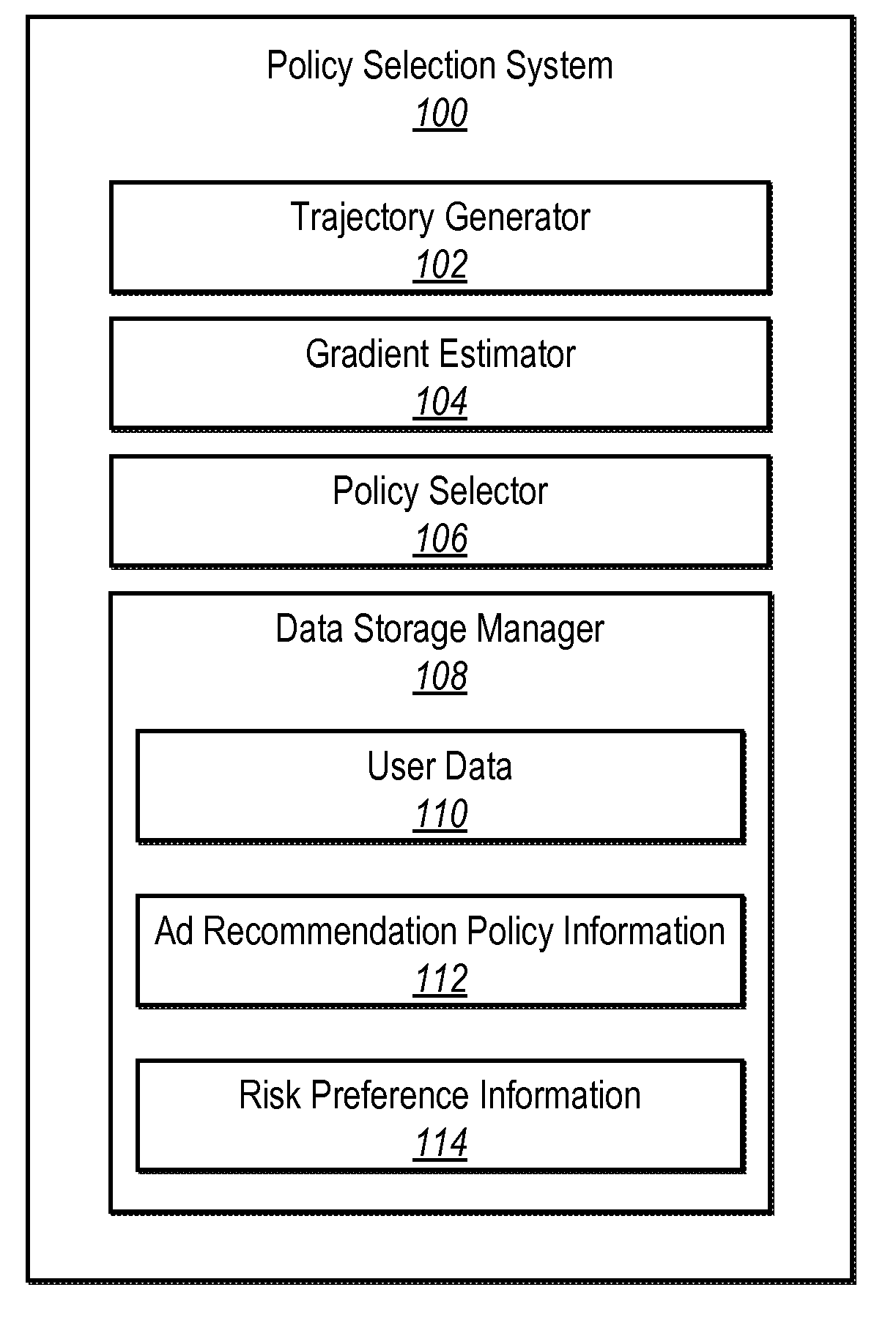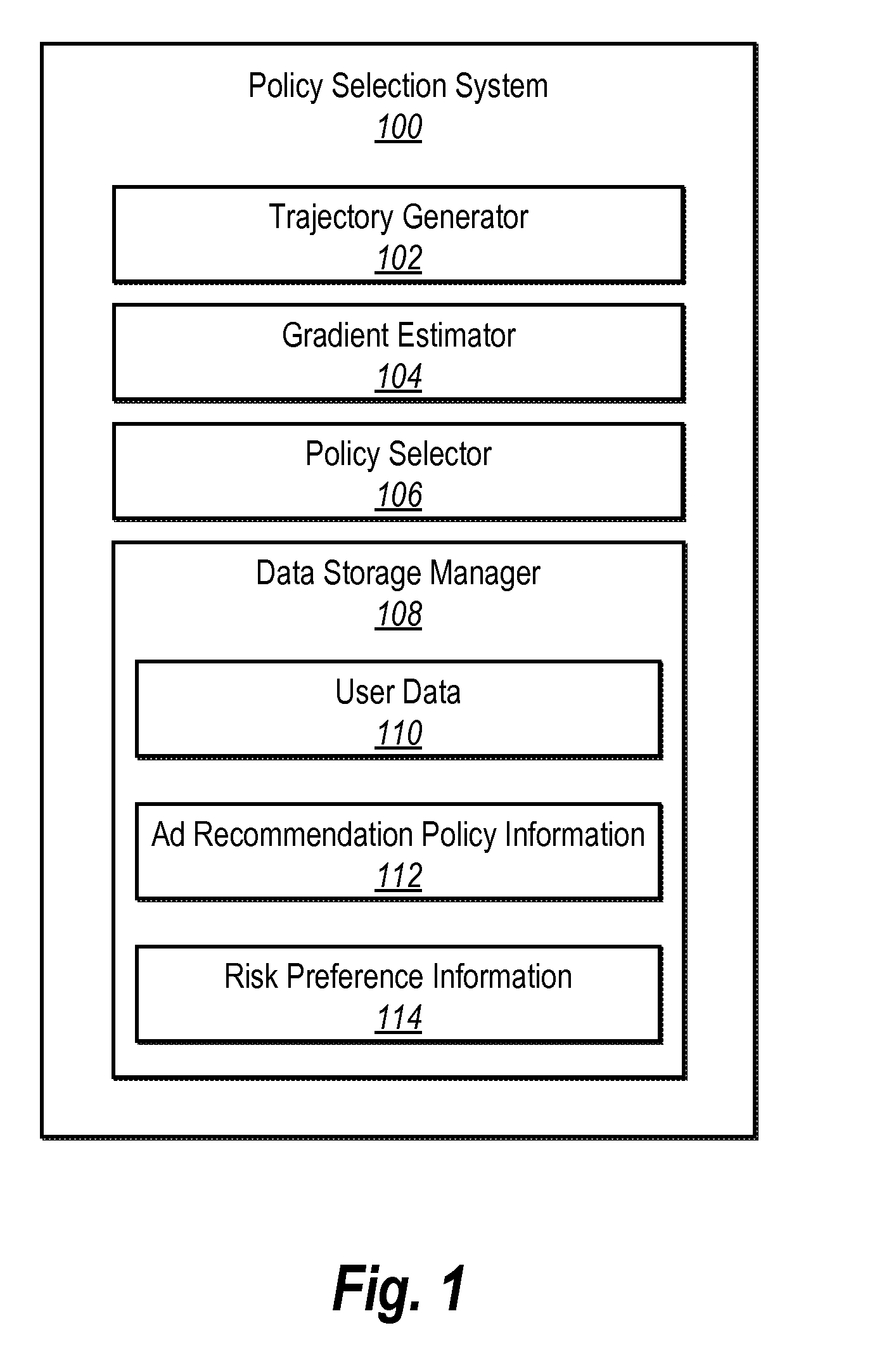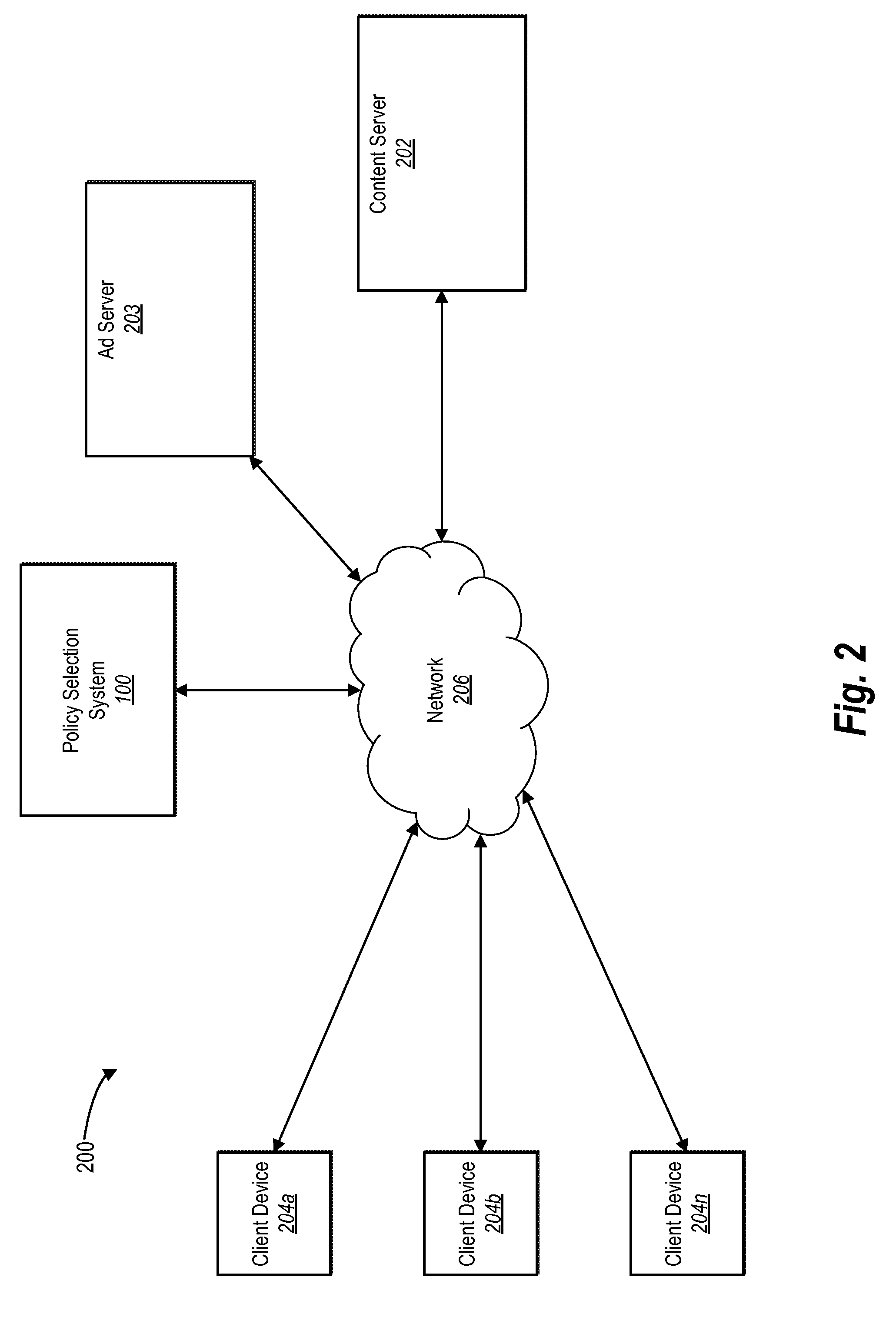Selecting digital advertising recommendation policies in light of risk and expected return
a technology of digital advertising and risk tolerance, applied in the direction of data processing applications, instruments, computing, etc., can solve problems such as unsustainable revenue loss, overlook problems, and catastrophic business, and achieve the effect of reducing the risk of adverse business outcomes
- Summary
- Abstract
- Description
- Claims
- Application Information
AI Technical Summary
Benefits of technology
Problems solved by technology
Method used
Image
Examples
case 1
[0140]Consider the following cases:[0141] When
v∈(-Cmax1-γ,Cmax1-γ).
For every g(ν) ∈∂νL(θ, ν, λ), there exists a sufficiently small η0>0 such that
v-η0g(v)∈[-Cmax1-γ,Cmax1-γ]
and
Γν(θ−η0g(ν))−θ=−η0g(ν).
Therefore, the definition of Υθ[−g(ν)] implies
maxg(v)DtL(θ,v,λ)=max{-g2(v)g(v)∈∂vL(θ,v,λ)}≤0.
case 2
The maximum is attained because θνL(θ, ν, λ) is a convex compact set and g(ν)Υν[−g(ν)] is continuous function. At the same time, we have maxg(ν)DtL(θ, ν, λ)νL(θ, ν, λ).[0142] When
v∈{-Cmax1-γ,Cmax1-γ}
and for any g(ν) ∈∂Lν(θ, ν, λ) such that
v-η0g(v)∈[-Cmax1-γ,Cmax1-γ],
for any η∈(0, η0] and some η0>0.
The condition
v-ηg(v)∈[-Cmax1-γ,Cmax1-γ]
implies that Υν[−g(ν)]=−g(ν).
Then the following obtains:
maxg(v)DtL(θ,v,λ)=max{-g2(v)g(v)∈∂vL(θ,v,λ)}≤0.
Furthermore,
[0143]maxg(v)DtL(θ,v,λ)<0
case 3
whenever 0∉∂νL(θ, ν, λ).[0144]
v∈{-Cmax1-γ,Cmax1-γ}
and there exists a non-empty set
(v):={g(v)∈∂Lv(θ,v,λ)θ-ηg(v)∉[-Cmax1-γ,Cmax1-γ],∃η∈(0,η0],∀η0>0}.
First, consider any g(ν)|(ν). For any η>0, define νη:=ν−ηg(ν). The above condition implies that when 0ν[νη] is the projection of νη the tangent space of
[-Cmax1-γ,Cmax1-γ].
For any elements
v^∈[-Cmax1-γ,Cmax1-γ],
since the following set
{v∈[-Cmax1-γ,Cmax1-γ]:v-vη2≤v^-vη2}
is compact, the projection of vη on
[-Cmax1-γ,Cmax1-γ]
exists. Furthermore, since ƒ(ν):=½(ν−νη)2 is a strongly convex function and Δƒ(ν)=ν−νη, by first order optimality condition, one obtains
∇f(vη*)(v-vη*)=(vη*-vη)(v-vη*)≥0,∀v∈[-Cmax1-γ,Cmax1-γ]
where ν*η is an unique projection of νη (the projection is unique because ƒ(ν) is strongly convex and
[-Cmax1-γ,Cmax1-γ]
is a convex compact set). Since the projection (minimizer) is unique, the above equality holds if and only if ν=ν*η. Therefore, for any
v∈[-Cmax1-γ,Cmax1-γ]
and η>0.
g(v)ϒv[-g(v)]=g(v)(lim0<η→0vη*-vη)=(lim0<η→0v-vηη...
PUM
 Login to View More
Login to View More Abstract
Description
Claims
Application Information
 Login to View More
Login to View More - R&D
- Intellectual Property
- Life Sciences
- Materials
- Tech Scout
- Unparalleled Data Quality
- Higher Quality Content
- 60% Fewer Hallucinations
Browse by: Latest US Patents, China's latest patents, Technical Efficacy Thesaurus, Application Domain, Technology Topic, Popular Technical Reports.
© 2025 PatSnap. All rights reserved.Legal|Privacy policy|Modern Slavery Act Transparency Statement|Sitemap|About US| Contact US: help@patsnap.com



